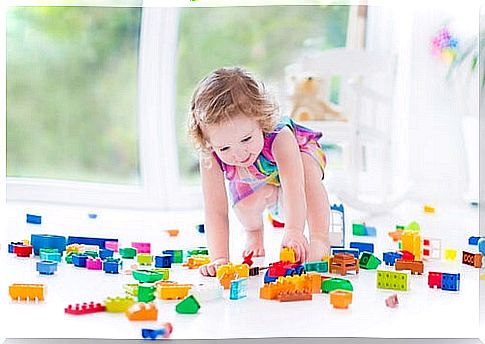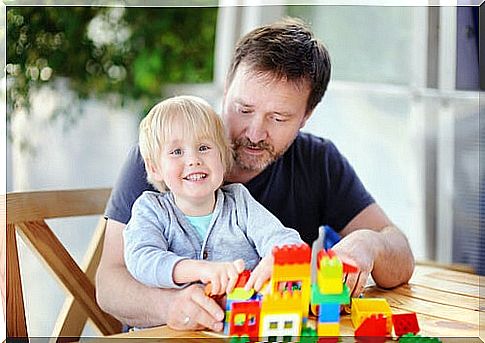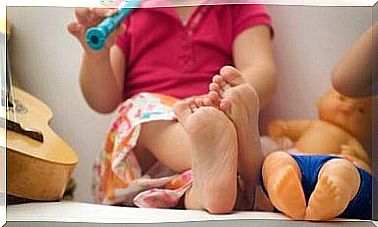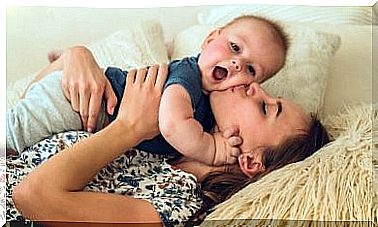Psychological Benefits Of LEGO

Have you ever noticed the psychological benefits of LEGO? This game, as popular as it is entertaining, has managed to position itself as one of the favorites in the community, since it allows you to explore the vast territories of imagination and leisure.
LEGO refers to a brand and company of Danish origin, which is known for producing plastic toys that can be interconnected. Founded in 1932, until 1949 this company was dedicated to producing wooden toys. Later, he began to produce plastic toys.
The name LEGO is an abbreviation of 2 Danish words: Leg and Godt. The meaning of these words is Play well. Over the years, the LEGO company has produced various lines of toys; like LEGO Hero Factory, Bionicle and Exo-Force. On the other hand, it has numerous agreements with the Indiana Jones, Harry Potter and Star Wars franchises.
Psychological benefits of LEGO in children
The psychological benefits of LEGO in children Many benefits can be derived from relating children to the world of the legos, focusing mainly on the following: The generation of ideas. In fact, according to the psychiatrist María Teresa Mata; the free construction of various objects through the legos has very positive effects. One of them is that it allows you to develop emotional intelligence.
In addition, it contributes with psychotherapy. On the other hand, gambling through legos can influence the fact of externalizing beliefs and emotions. Many children today enjoy assembling interlocking pieces (LEGOS) to form various objects. Now, what are the psychological benefits of LEGO? Without a doubt, the psychological benefits of LEGO on children seem incredible, since they are more interesting than you can imagine.

Psychological benefits of LEGO on children from different perspectives
The psychological benefits of LEGO in children can be approached from different points of view:
LEGO as a working tool
LEGO is a well-known trademark and is being used by various companies and psychologists; as excellent benefits are derived from its use. When used as a work tool, actually; we are working with a dynamic of representation of ideas that shows a very efficient free construction; which generates a lot of information.
LEGO Serious Play method
LEGO has established the LEGO Serious Play method, which offers many benefits in relation to solving problems in everyday life.
Develop emotional intelligence
This is an outsourcing technique that promotes, among other things, the following: Ability to achieve objectives, projection of challenges, imagination and expression.
Helps make connections with other levels
According to the same psychiatrist mentioned above, playing with LEGOS allows you to establish connections with other levels. What does this mean? When pieces are put together, creativity and imagination are combined with manual work. This facilitates various mental processes that are related to communication.
Because the observer can gain a deeper knowledge regarding the individual who creates an object from laymen. And it is that when the technique of building legos is transferred to a work team or to the family, it is possible to visualize the way in which the individual perceives the world. Thus a greater dialogue is achieved.

A priori messages are perceived
That is, messages are received through the association of ideas and creativity, things that cannot be observed if other methods are used. Thanks to this, information can be obtained from the individual that, in other cases, goes unnoticed. In fact, it is thanks to these messages that effective solutions can be found.
- Unconscious barriers are broken down. Unconscious barriers are unintentionally appearing shields that relate to the individual’s social interaction. But thanks to the psychological benefits of LEGO, these barriers are gradually falling; Due to the fact that a greater expression of self-knowledge is achieved and also with that of others.
- The ability to resolve is developed. At times, a person may feel unable to solve a problem. However, if from a young age individuals are related to lay people; The psychological benefits of LEGO will act on their own, making the person find the necessary information within himself. In this way, the person can get information, order it, expose it and validate it, thus expanding their skills framework.
- It is possible to express the abstract. This means that information related to imaginary thoughts can be brought into the real world, which can improve efficiency in actions, which in turn improves processes.
These are just some of the psychological benefits of LEGO for children. It should be noted that the use of legos does not necessarily have to encompass the development of children’s emotional intelligence; since if many companies today recognize the benefits of the layman in their work; then adults can also take advantage of these plastic figures.
LEGO today
Since its inception, LEGO has revolutionized the way we see things from a young age. And although it is of Danish origin, at the moment it has grown so much to the point that a factory of these toys was inaugurated in Mexico. This has allowed its expansion throughout Latin America , allowing many children to develop their emotional intelligence.
At the time of carrying out an intelligence training through free construction; the psychological benefits of LEGO flow to the individual; achieving that it complements scenarios products of creativity with problem solving by gradually building Lego figures.
Its solidity, demonstrated by more than 80 years of experience in the children’s field thanks to the toys it produces; gives you seriousness in your work. For this reason, the role it has played should not be overlooked; in relation to the psychological benefits of LEGO, in so many children and adults with the passing of the decades, since being used wisely we can get to know each other better.










